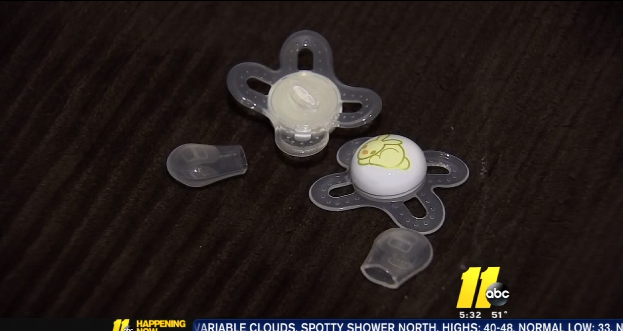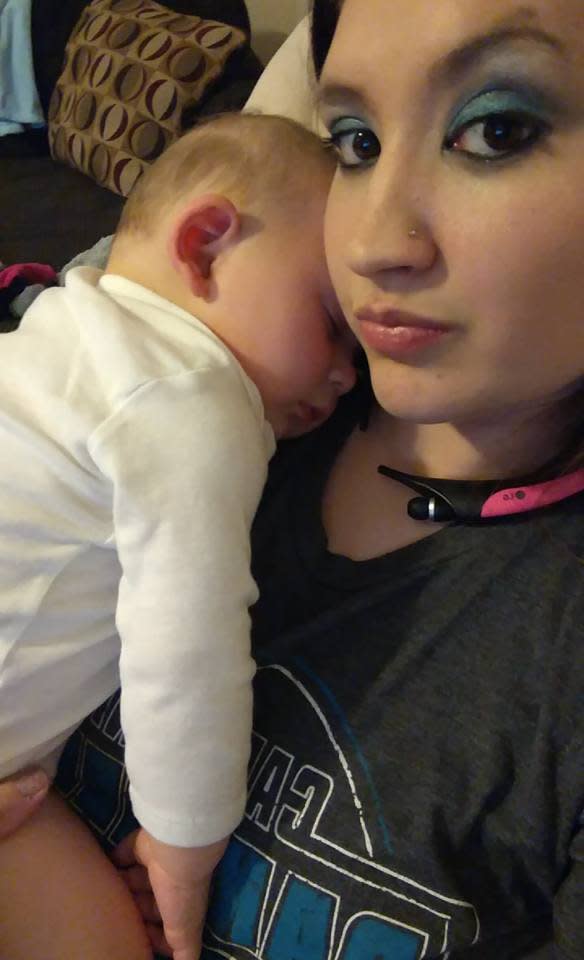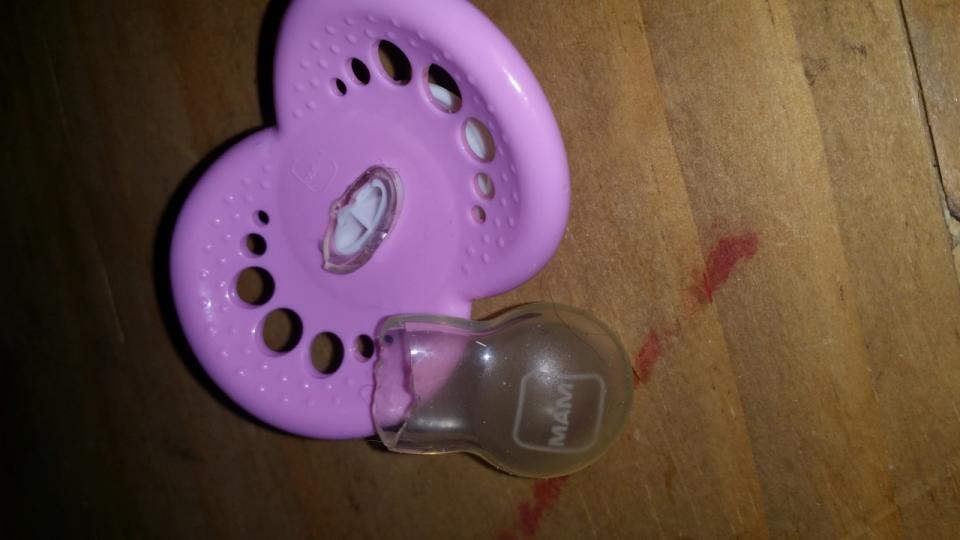Mom Speaks Out After Infant Chokes on Pacifier — Twice

In an aim to warn other parents, one mom is publicizing details of a recent pacifier scare: finding its nipple torn and lodged in the throat of her infant — not once, but twice.
STORY: Toddler ‘Lucky to Be Alive’ After Battery ‘Burned’ Through Her Lung
“He was about 2 months old,” Kacie McFadden of Sanford, N.C., told WTVD Monday. “He was gurgling and I ran in the room and I found that the pacifier had broken off — it was lodged in his throat and he was changing colors.” In a panic, she pulled the MAM pacifier out of baby Ryder’s mouth, but its nipple was missing. “I did the Heimlich … and it finally came out,” she said. “It really could have killed him had I not checked on him.”
STORY: The Scary Danger That Could Be Hiding in Your Baby’s Clothes
She reported it to the company, which sent her an apology, a package of new pacifiers, and a request to send in the broken one for analysis.

McFadden and her son. (Photo: Facebook)
“They sent new pacifiers in the mail trying to make us feel better about what happened. We had told them that we are not happy so they sent us two more,” the baby’s father, Jeremy Hedlund, wrote on MAM’s Facebook page in January. “WE AINT HAPPY AT ALL!!!!!!!!!!”
McFadden and Hedlund didn’t send in the old pacifier but kept and used the new ones without incident — for about two months, McFadden told the news station, when she found Ryder again with the soother torn and dangerous.
“He was going like that with his tongue, trying to get something out of his throat, and I realized the piece of the pacifier was lying on his stomach,” she recalled, adding that the nipple was again torn and partially in her baby’s throat. “Had the scare of my life twice, and now we’re not going to use them anymore.”
In response to the incidents, MAM, a Switzerland- and Austria-based baby product company with U.S. headquarters in Purchase, N.Y., released a statement, which it provided to Yahoo Parenting on Tuesday.
“MAM USA has placed the highest priority on the safety of our products since our company was founded four decades ago. That’s why we make sure that each MAM product exceeds strict U.S. and international standards and is subject to extremely thorough testing procedures to ensure quality and performance. For example, each pacifier undergoes a tensile strength test, and is batch coded for complete traceability,” it reads.

A similarly torn MAM pacifier, according to a recently filed CPSC report. (Photo: SaferProducts.gov)
“MAM USA estimates that there are currently 12 million of its pacifiers in use in the U.S., and the company has never had to recall any of its pacifier products. The instructions that are included with each pacifier we sell — and posted on our website — direct parents to carefully inspect the pacifier and perform a “pull test” before each use, especially when the child has teeth; and to throw it away at the first signs of damage or weakness. We also instruct customers to replace the pacifier every two months to ensure safety and hygiene.”
The statement continues with specific reference to the complaint regarding baby Ryder: “We have had several conversations with Kacie McFadden and Jeremy Hedlund, and expressed how sorry we are for the stress the family has endured. We are working to fully understand the issue with the pacifiers their son Ryder used, and have requested that the family send them to us so that we can carefully test and analyze them. After we finish our review, we will share our findings with the family, and return the pacifiers to them as they have asked.”
Similar reports regarding MAM pacifiers have been filed with the Consumer Product Safety Commission, including one from January, in which the plastic nipple had broken off in the mouth of a 1-year-old; the company notes in its statement that it’s aware of this “very small number” of such reports. “In every case in which the customer returned the pacifier to us,” the statement reads, “testing and analysis found that the pacifier had been damaged by prolonged use over time by teething babies, or by abrasive cleaning products, rather than any sort of manufacturing defect.”
Top photo: WTVD
Please follow @YahooParenting on Facebook, Twitter, Instagram, and Pinterest. Have an interesting story to share about your family? Email us at YParenting (at) Yahoo.com.



